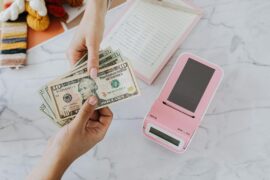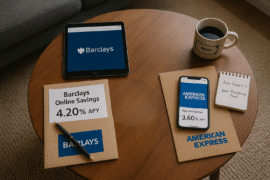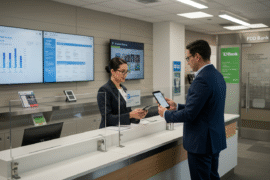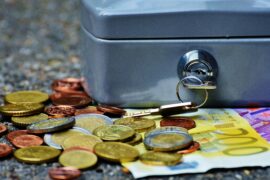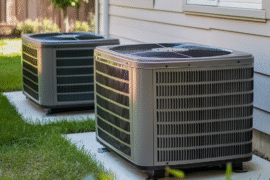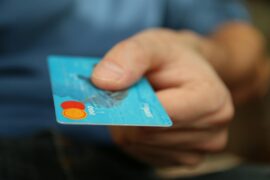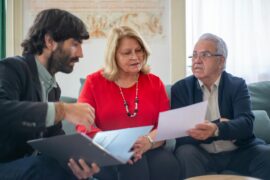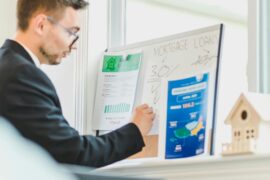This article may contain references to products or services from one or more of our advertisers or partners. We may receive compensation when you click on links to those products or services. Nonetheless, our opinions are our own.
The information presented in this article is accurate to the best of our knowledge at the time of publication. However, information is subject to change, and no guarantees are made about the continued accuracy or completeness of this content after its publication date.

Updated by Albert Fang
Keeping track of one’s finances is an essential part of daily life. When you are just starting out, it can be difficult to keep track of so many monetary details, especially if the old paper methods of tracking expenditures in a ledger seem archaic to the younger generation. Thanks to the abundance of financial resources and services available, managing your money has never been easier, due to the convenience of mobile apps. In order to improve one’s credit score, it is a good idea to keep at least a few different types of financial accounts, such as a savings and checking account or a line of credit.
There are many things to keep in mind when looking to open a new account, including any fees or minimum balance requirements, as well as other important considerations. Each of the financial services we looked at in this article has pros and cons. What are the benefits of Chase vs SoFi Checking and Savings or SoFi Checking and Savings vs Ally? We hope that this article will help you choose which financial service to use in an informed way.
Your First Account Setup
Many young adults who are starting out in the financial world prefer to either cash their paychecks or deposit them in digital accounts like PayPal rather than opening a checking and savings account. The main problem is that few see the advantage of having such accounts, but there are many benefits to having a checking and savings account, some of which include FDIC insurance and the ability to improve one’s credit score. For many people, having a personal checking and savings account is a sign of financial responsibility. Opening this type of financial account may necessitate considering the options listed below.
Chase
The advice of a young adult’s parents is often to go with a traditional financial institution like Chase. Chase is a bank with a well-known name and a long history that offers a variety of financial products and services, such as savings and checking accounts and credit cards. The $12 monthly maintenance fee for Chase checking accounts is usually waived with a linked savings account, autosave features, and online bill pay. Overdraft protection and tech support are available around the clock at Chase.
Secure applications with two-factor authentication can be used by account holders to access and manage their accounts. Chase ATMs do not charge ATM fees, and other ATMs charge a flat fee of $2.5 for withdrawals. Direct deposit of paychecks and deposits of cash, checks, and money orders are both simple and convenient for account holders.
SoFi Checking and Savings
For their checking and savings needs, the younger millennial generation is turning to digital financial services rather than long-established banks like Chase. SoFi Invest began as an online investment brokerage and later added checking and savings accounts, loans, and credit cards to its financial services offering. SoFi began offering additional financial services, including a competitive checking and savings account option, after gaining its bank charter. SoFi accounts are FDIC-insured, have no monthly fees, and have no minimum balance requirement to open. They also have high interest rates. Account holders can receive their funds two days earlier than with traditional banking services, and SoFi offers features like overdraft protection and direct deposit of paychecks. Withdrawals are fee-free at Allpoint ATMs. Cash deposits, on the other hand, must be made through third-party vendors and can cost up to $4.95 per deposit, which is a drawback of SoFi.
Ally Banking
Another long-established bank, Ally Banking, offers a variety of banking services. Overdraft protection and direct paycheck deposit are just two of the many convenient features available through Ally’s safe mobile app. Users of the Ally app can deposit checks remotely by taking a picture with their phone’s camera and using the most up-to-date encryption software. One feature offered on Ally checking accounts not offered on the others reviewed here is the Round Up feature, in which all purchases made on Ally checking accounts are rounded up to the nearest dollar, and the difference is transferred to a savings account. Ally is also FDIC insured, and offers free access at all Allpoint ATMs. There are no monthly maintenance fees, and no minimum balance is required.
Summary
A lifetime of wise financial decisions begins with the establishment of a solid financial foundation. A young adult’s first step toward long-term financial security is often opening their first checking and savings account. With a savings account, you can put money aside for unexpected expenses, safeguard your assets, and curb your desire to overspend. Using a checking account, you can quickly and easily access the funds in your account to make purchases or pay your bills. Many online financial services do not offer FDIC-insured accounts, which protect against losses due to hacks or system failure, making them more risky to use. So have you decided to go with Chase vs SoFi Checking and Savings or SoFi Checking and Savings vs Ally? We hope that this article about comparing checking and savings account providers will help people who are opening new accounts to make a smart choice.
FAQ
1. What are the requirements for opening a savings and checking account?
If you’re opening a new bank account, you’ll need at least two forms of government-issued photo ID (like a driver’s license or passport), as well as a social security number, a utility bill issued for your current address, contact information, and employment information.
2. What are the age requirements for these three services?
If you open an account with Ally or SoFi, you must be at least 18 years old. There are custodial agreements in place for those under the age of 18 who wish to open a bank account at Chase.
3. How much interest should a new savings account holder expect to earn?
A “good” interest rate is around 1% or more, with the average interest rate on most savings accounts being around 0.06%.

Reviewed and edited by Albert Fang.
See a typo or want to suggest an edit/revision to the content? Use the contact us form to provide feedback.
At FangWallet, we value editorial integrity and open collaboration in curating quality content for readers to enjoy. Much appreciated for the assist.
Did you like our article and find it insightful? We encourage sharing the article link with family and friends to benefit as well - better yet, sharing on social media. Thank you for the support! 🍉
Article Title: Chase vs SoFi Checking and Savings vs Ally Bank Comparison: Which Money Account to Open?
https://fangwallet.com/2022/06/02/chase-vs-sofi-checking-and-savings-vs-ally-comparison-which-money-account-to-open/The FangWallet Promise
FangWallet is an editorially independent resource - founded on breaking down challenging financial concepts for anyone to understand since 2014. While we adhere to editorial integrity, note that this post may contain references to products from our partners.
The FangWallet promise is always to have your best interest in mind and be transparent and honest about the financial picture.
Become an Insider

Subscribe to get a free daily budget planner printable to help get your money on track!
Make passive money the right way. No spam.
Editorial Disclaimer: The editorial content on this page is not provided by any of the companies mentioned. The opinions expressed here are the author's alone.
The content of this website is for informational purposes only and does not represent investment advice, or an offer or solicitation to buy or sell any security, investment, or product. Investors are encouraged to do their own due diligence, and, if necessary, consult professional advising before making any investment decisions. Investing involves a high degree of risk, and financial losses may occur including the potential loss of principal.
Source Citation References:
+ Inspo



